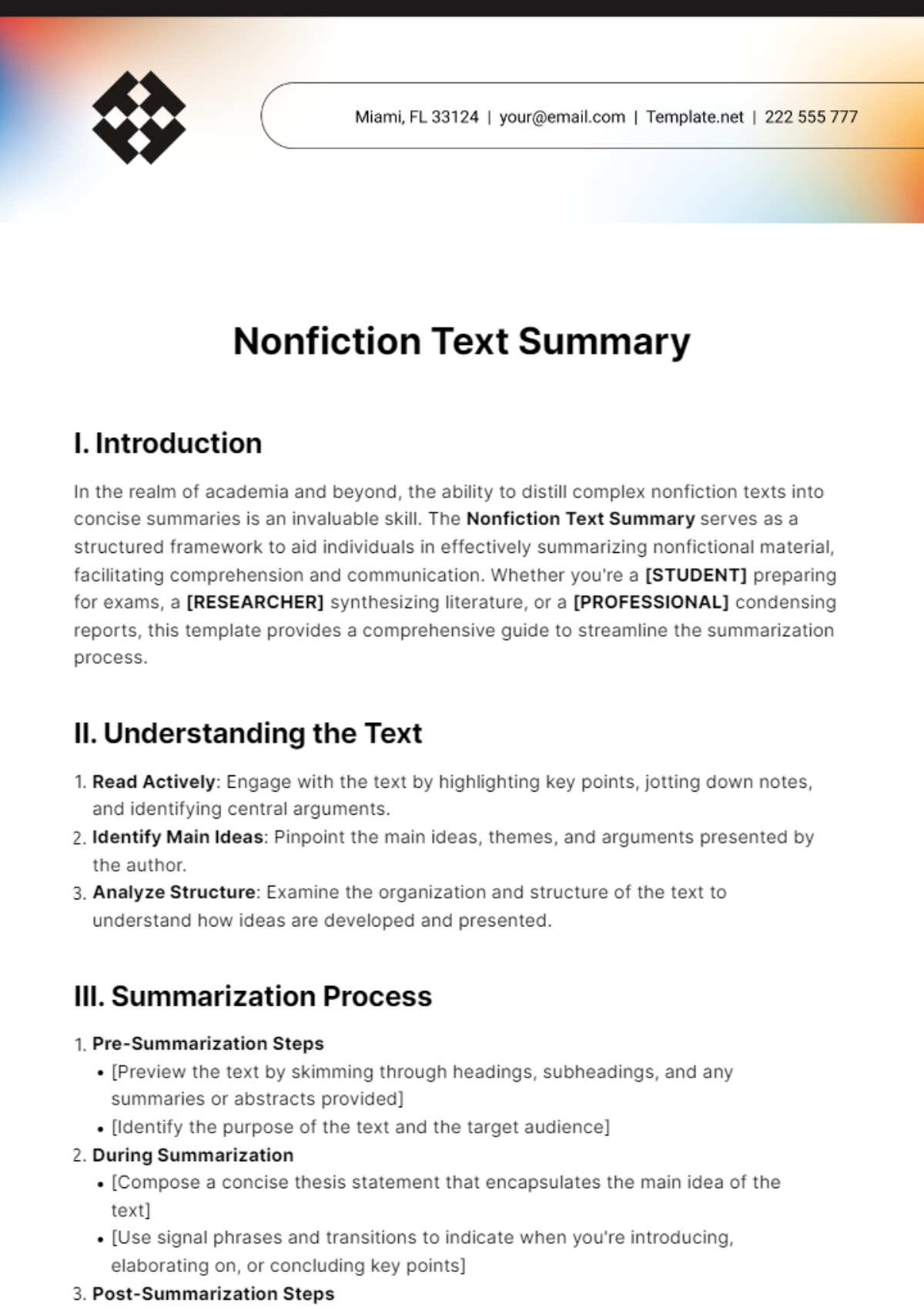Nonfiction Text Summary
I. Introduction
In the realm of academia and beyond, the ability to distill complex nonfiction texts into concise summaries is an invaluable skill. The Nonfiction Text Summary serves as a structured framework to aid individuals in effectively summarizing nonfictional material, facilitating comprehension and communication. Whether you're a [STUDENT] preparing for exams, a [RESEARCHER] synthesizing literature, or a [PROFESSIONAL] condensing reports, this template provides a comprehensive guide to streamline the summarization process.
II. Understanding the Text
Read Actively: Engage with the text by highlighting key points, jotting down notes, and identifying central arguments.
Identify Main Ideas: Pinpoint the main ideas, themes, and arguments presented by the author.
Analyze Structure: Examine the organization and structure of the text to understand how ideas are developed and presented.
III. Summarization Process
Pre-Summarization Steps
[Preview the text by skimming through headings, subheadings, and any summaries or abstracts provided]
[Identify the purpose of the text and the target audience]
During Summarization
[Compose a concise thesis statement that encapsulates the main idea of the text]
[Use signal phrases and transitions to indicate when you're introducing, elaborating on, or concluding key points]
Post-Summarization Steps
[Review your summary to ensure coherence, accuracy, and adherence to the original text]
[Seek feedback from peers or mentors to refine your summary]
IV. Summarization Techniques
Paraphrasing
Extraction
Condensation
Synthesis
V. Tips for Effective Summarization
Be Selective: Focus on the most important information while omitting irrelevant details.
Paraphrase: Use your own words to convey the author's ideas rather than copying verbatim.
Maintain Objectivity: Present the author's arguments impartially without injecting personal bias.
Clarity and Brevity: Strive for clarity and brevity to ensure that the summary is concise yet comprehensive.
Review and Revise: Take time to review and revise your summary for accuracy and coherence.
VI. Conclusion
In conclusion, the Nonfiction Text Summary provides a structured approach to summarizing nonfictional texts effectively. By following the outlined steps and guidelines, individuals can distill complex information into clear and concise summaries, enhancing comprehension and communication skills. Whether you're a [STUDENT], [RESEARCHER], or [PROFESSIONAL], this template serves as a valuable tool for synthesizing and conveying key insights from nonfictional material.
Prepared by: [YOUR NAME]
Summary Templates @ Template.net






























